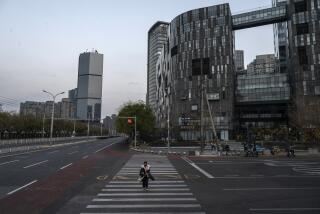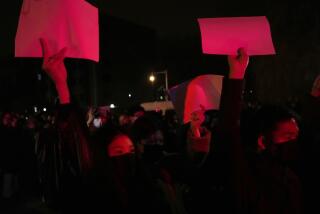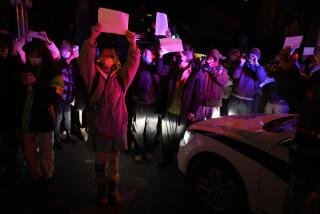The coronavirus is inspiring memes, parodies and art in Asia as a way to cope
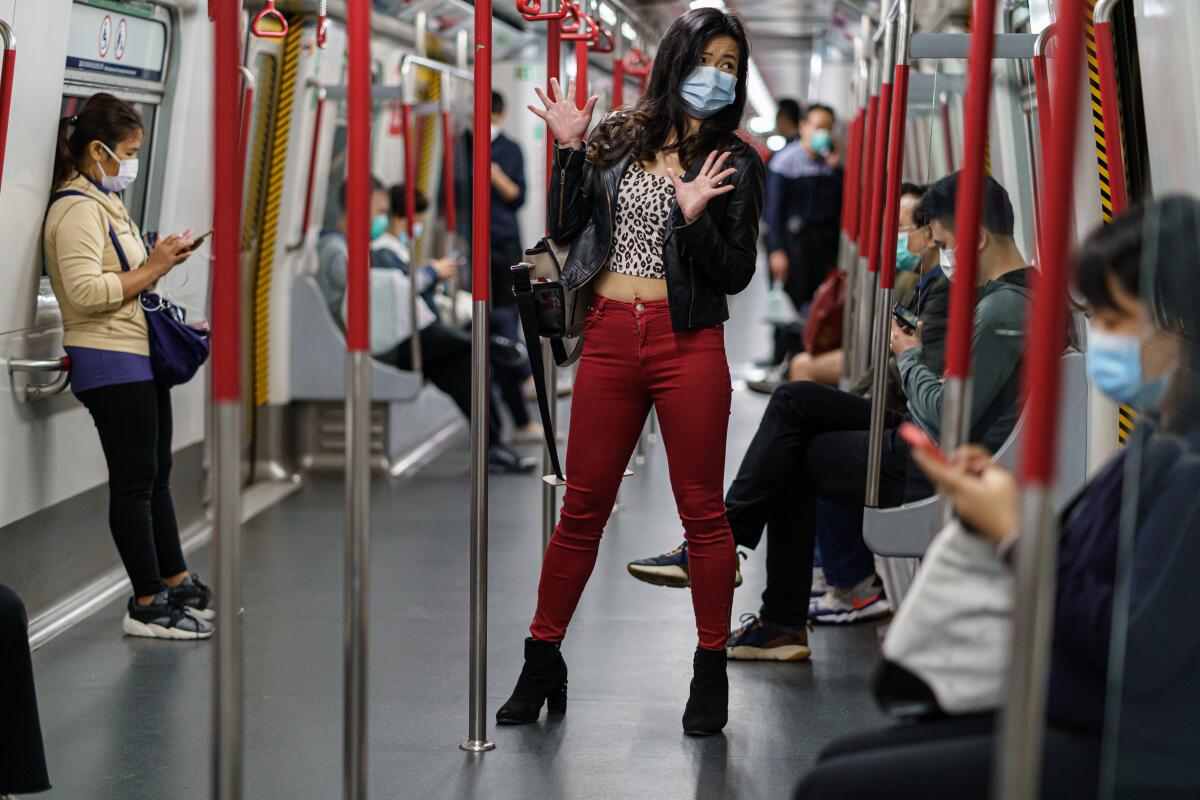
- Share via
SINGAPORE — Things felt bleak in Hong Kong for Kathy Mak. The city had just reported its first death from the coronavirus, store shelves were being cleared of basic supplies, and the outbreak was giving a months-old protest movement another troubling dimension.
“Life had just stopped,” said the 30-year-old dance instructor and performer, who like other people in Hong Kong has been confined mostly to her apartment. “People were being hysterical, grabbing toilet paper.”
Then, in a fit of inspiration, Mak started jotting down lyrics to a song — a parody she hoped would lighten the mood at an upcoming charity event.
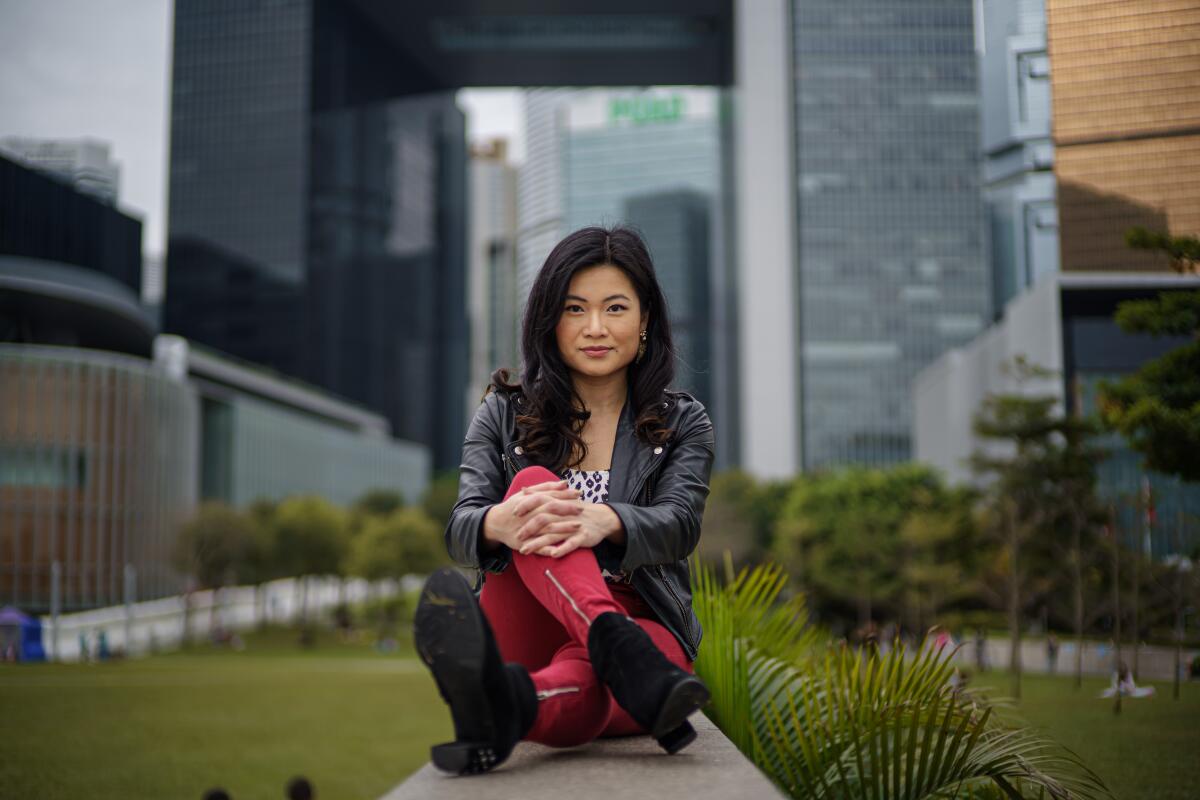
Sung to the tune of 1990s pop hit “Torn” by Australian singer Natalie Imbruglia,” Mak’s live performance recorded on her cellphone racked up over 230,000 views on YouTube and sparked a minor sensation in a city worn down by numbing headlines and despair.
She sings:
There’s nothing left at the grocery store
I can’t find bok choy no more
There’s just white people things
Like pasta, cheese and corn
Where the hell’s the rice?
Why’s it three times the price?
The United States is just now encountering the realities and insecurities of the coronavirus, but in Asia, the deadly illness, with its quarantines and dystopian eeriness, has dominated life for two months.
Originating from the Chinese city of Wuhan, the virus has lodged itself into the zeitgeist here, inspiring songs, surrealist art, political cartoons, comics and TikTok memes — the latter in no small part due to the legions of bored teenagers stuck at home with schools closed.
The collective effort — a surge of humor and creativity in the face of disturbing infection rates — has highlighted the disease’s strain on families and the failings of governments to protect their people. But it’s also serving like a coping mechanism, providing levity to a crisis that has shown few bounds.

In an animated music video from an unlikely source, Vietnam’s Ministry of Health may have unwittingly delivered the epidemic’s anthem — a catchy three-minute tune that sounds like it belongs on Top 40 rotation reminding citizens to wash their hands vigorously, avoid touching their faces and stay clear of crowded places.
The song by Vietnamese singers Erik and Min was deemed a “genuine club banger” Sunday by comedian John Oliver on his HBO show “Last Week Tonight.”
It has spawned a dance on TikTok replete with hand-washing motions and a few “dabs” for good measure.
The music and video app is awash with coronavirus-themed clips and memes, including one that features various gags to a song that repeats the line “It’s corona time” above an ’80s electro beat.
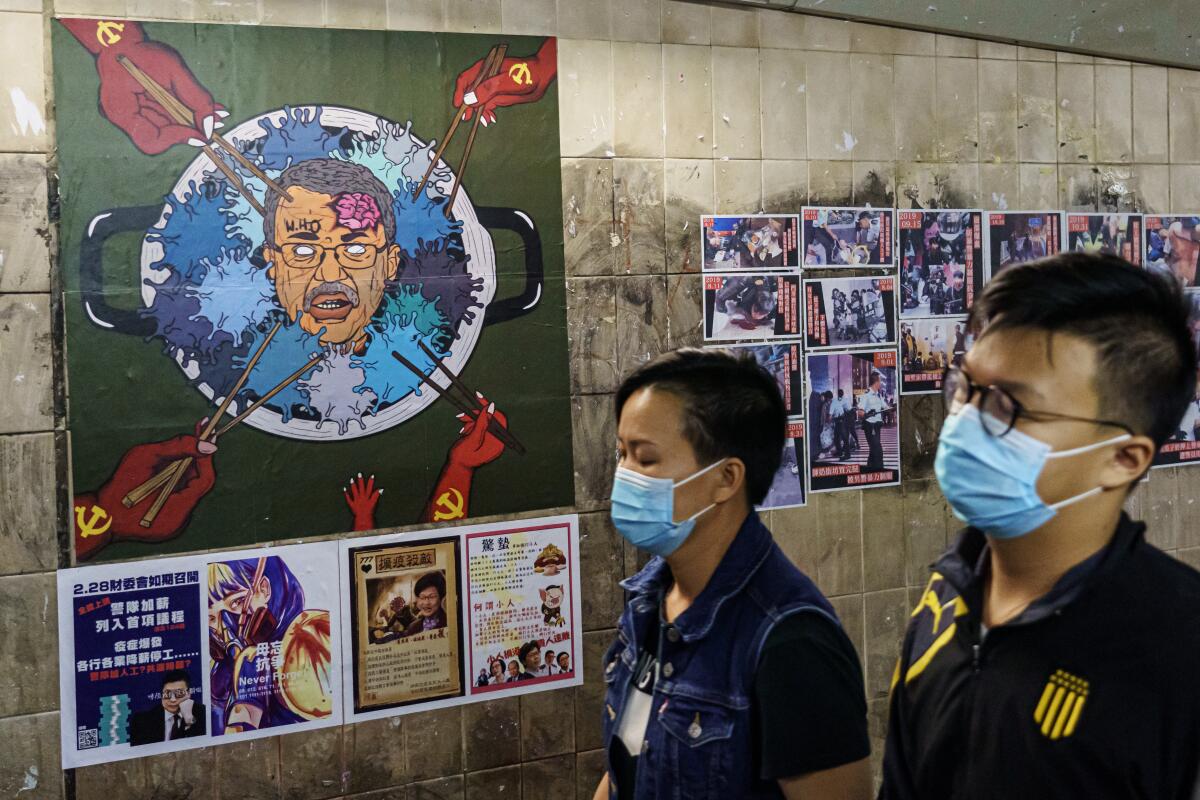
One TikTok video of a young Indonesian woman seated on a plane set against the Celia Mara-sampling song “Opaul” begins with a banner for another well-worn meme: the coronavirus check. She then ticks off a safety checklist, putting on a face mask, glasses and the hood to her sweatshirt, whose strings she pulls so tightly that only her eyes and forehead show.
Political art inspired by the virus has also accelerated across the region.
Badiucao, a Chinese digital cartoonist based in Melbourne, Australia, who’s attracted the ire of authorities in Beijing for his stand on human rights, recently shifted his attention from the Hong Kong pro-democracy protests to the Chinese response to the outbreak — particularly the government’s muzzling of doctors who tried to sound the alarm about the virus.
The Shanghai native, who uses a pen name to protect his identity, recently posted on Instagram a black and white image of Li Wenliang, the Wuhan physician who died of the coronavirus Feb. 7 and has become a symbol of popular grief and anger. Splashed across Li’s left eye is a red puzzle piece dripping blood — a reference to a Chinese diplomat who appeared on Australian TV and compared Western media coverage of China’s virus response to picking pieces of a jigsaw puzzle to portray the country in a bad light.
In an earlier image made to look like an informational poster titled “How to Control the Wuhan Pneumonia,” Badiucao drew a person holding a white face mask, then scrunching it up and stuffing it in their mouth. Beneath, it reads: “Silence is Health.”
The 33-year-old artist, who struggles to find venues to exhibit his work because of Chinese pressure, said there was little difference between China’s response to the Hong Kong protests and the Wuhan virus.
“It shows how easily a domestic problem caused by censorship or bad governance can influence everyone in the world,” Badiucao said.
“I find it ironic,” he added. “As a China-born artist trying to reflect the reality in China, I feel like there’s tons of material I can use to expand my artwork. But it’s actually very sad. I’d rather have nothing to work with. Our reality is really bad.”
Censors in China make it nearly impossible for subversive memes to go viral, but Badiucao said he’s seen a few attempts from afar. One was a play on Li’s so-called letter of reprimand from the Wuhan police forcing the doctor to acknowledge with two fingerprints that he had spread false rumors. To evade censors, an artist created a copy of the document devoid of writing but whose meaning was unmistakable because of the remaining presence of Li’s fingerprints.
“If you’re creative, you can trigger the same emotion in a minimal way,” Badiucao said.
There’s nothing subtle about Hong Kong artist Tommy Fung’s work. His fantastical, digitally enhanced photographs used to depict his city in more whimsical times: images of himself sitting as a cross-legged giant atop the iconic Star Ferry, the former Kowloon-Canton Railway clock tower tied in a knot.
Today, that creativity is channeled toward reflecting the panic and desperation that’s gripped Hong Kong, which has reported two deaths and 107 infections due to the coronavirus as of Friday evening.
His work now includes one image of swarms of protesters climbing on top of one another in a “World War Z” motif. They reach for a pair of blue masks floating in the air. Another depicts Hong Kong riot police carrying guns with their heads replaced by giant, spiky, green virus cells. And in another, Fung shows mask-clad pedestrians staring at a man with a tentacled alien head covered in strings of slime. The caption reads: “Nowadays when you see someone coughing and not wearing a mask.”
“I have to exaggerate things to make it more eye-catching,” Fung said. “It’s hard to be optimistic right now. I’m trying to make people laugh and entertain them.”
In South Korea, where the virus has hit the hardest outside China, several dozen cartoonists behind popular online comics began postinga series of coronavirus-themed strips last week titled “Let’s overcome this together.”
Variously styled as horror, cute anime or uplifting public service announcements, some of the comics relayed information about hand-washing and other precautions; others thanked front-line medical staff working to combat the outbreak.
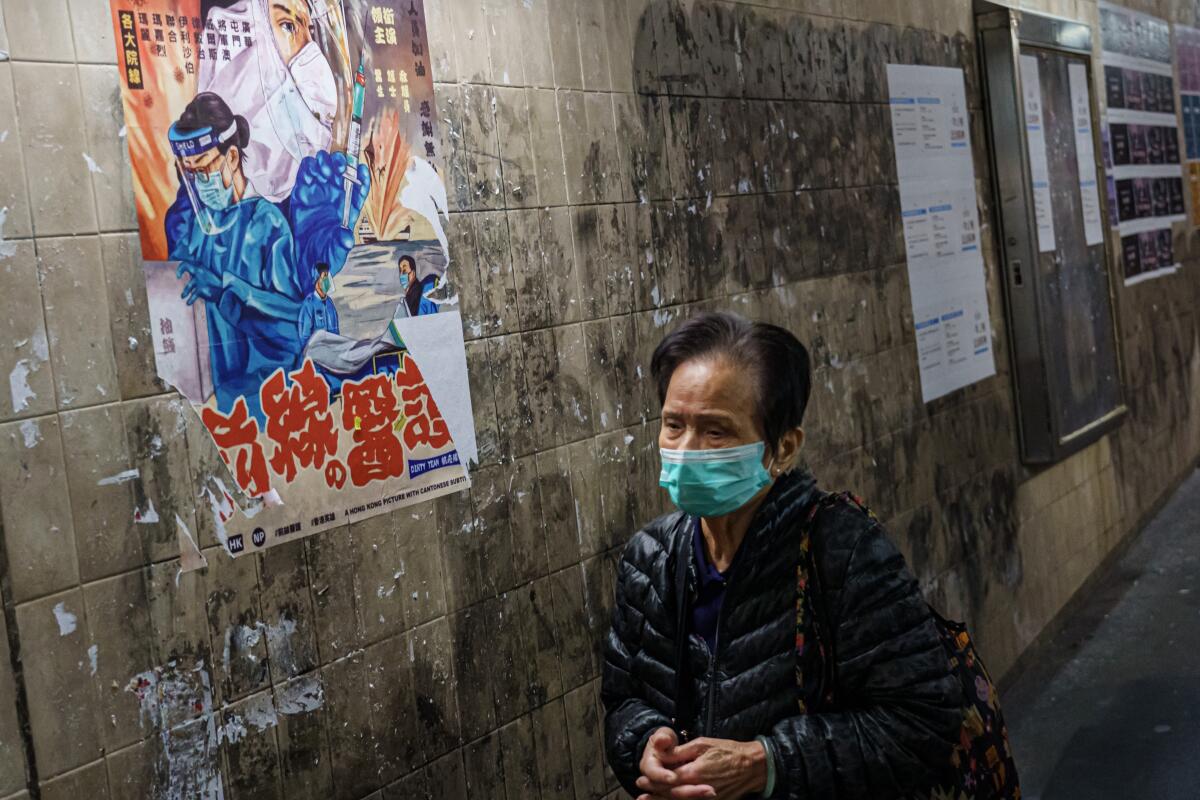
One, by a cartoonist with the pen name Quacy, depicted a mother keeping away from her young daughter for two weeks as she awaits the results of her coronavirus test.
“We want to hold hands. We want to feel each other’s warmth,” the comic says. “We need to keep distance because we love each other.”
Another showed an exhausted medical worker in goggles and the white coverall biohazard suit that has become an all-too-familiar sight. A baby bear sits down next to him and calls him a superhero, asking to be his sidekick.
Back in Hong Kong, Mak has tried to keep the mood light. She recently posted a follow-up to her “Torn” cover, a workout video made specially for those under home quarantine. The panic-buying-themed exercises include a jog on the spot with bags of rice, and a stretch and reach for toilet paper you might find on the top shelf of a supermarket aisle.
That video didn’t get nearly as many clicks, but the last few weeks of momentary fame succeeded in one way, Mak said. “This whole viral thing got me distracted from the virus.”
Times staff writer Victoria Kim in Seoul contributed to this report.
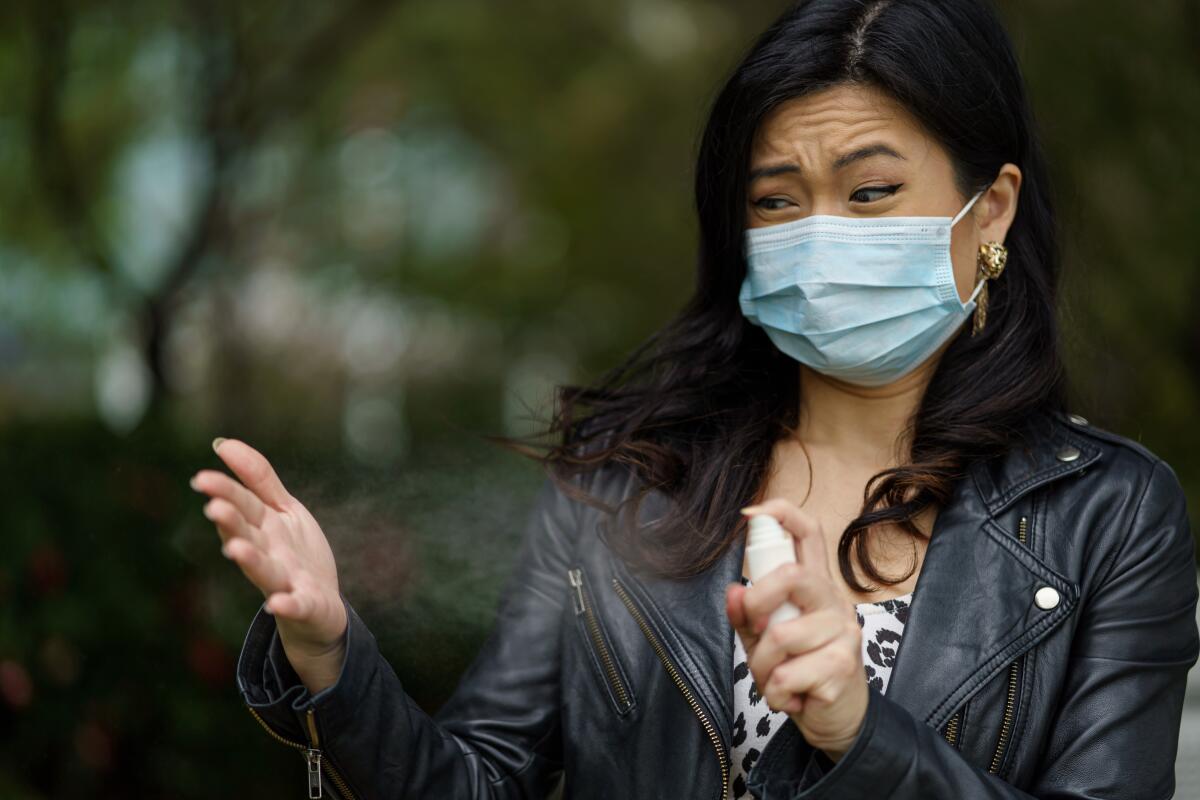
More to Read
Sign up for Essential California
The most important California stories and recommendations in your inbox every morning.
You may occasionally receive promotional content from the Los Angeles Times.
